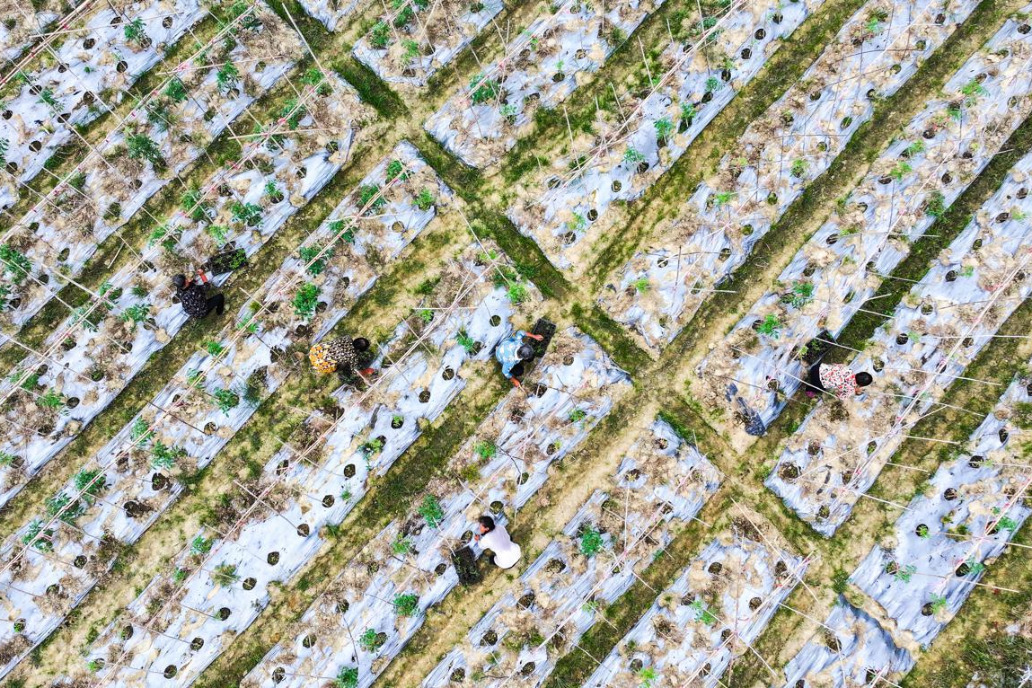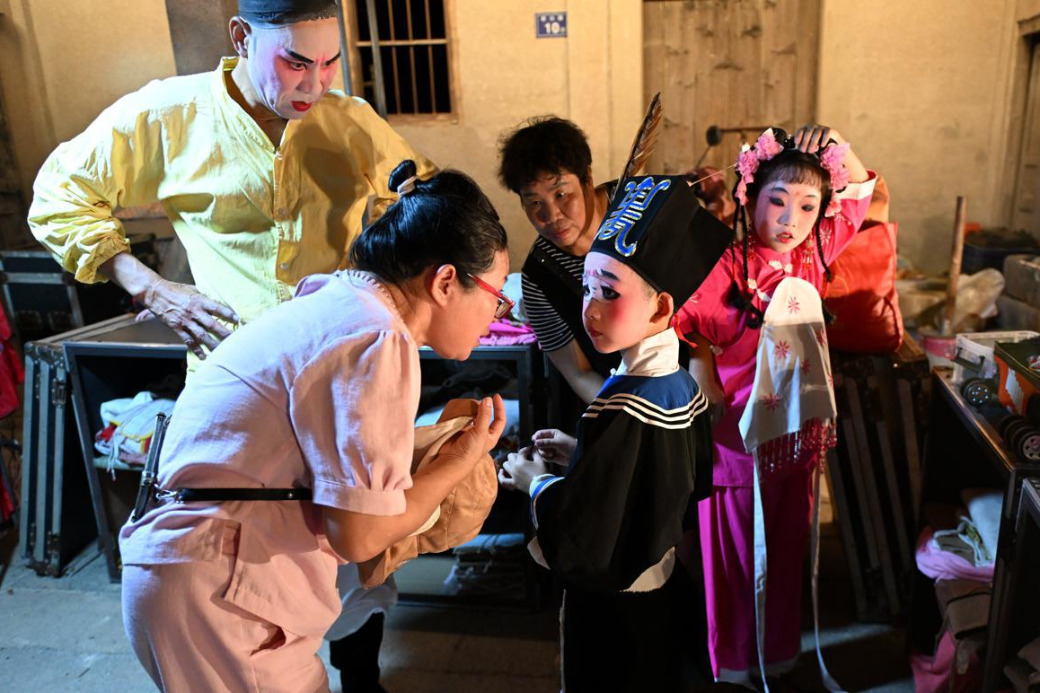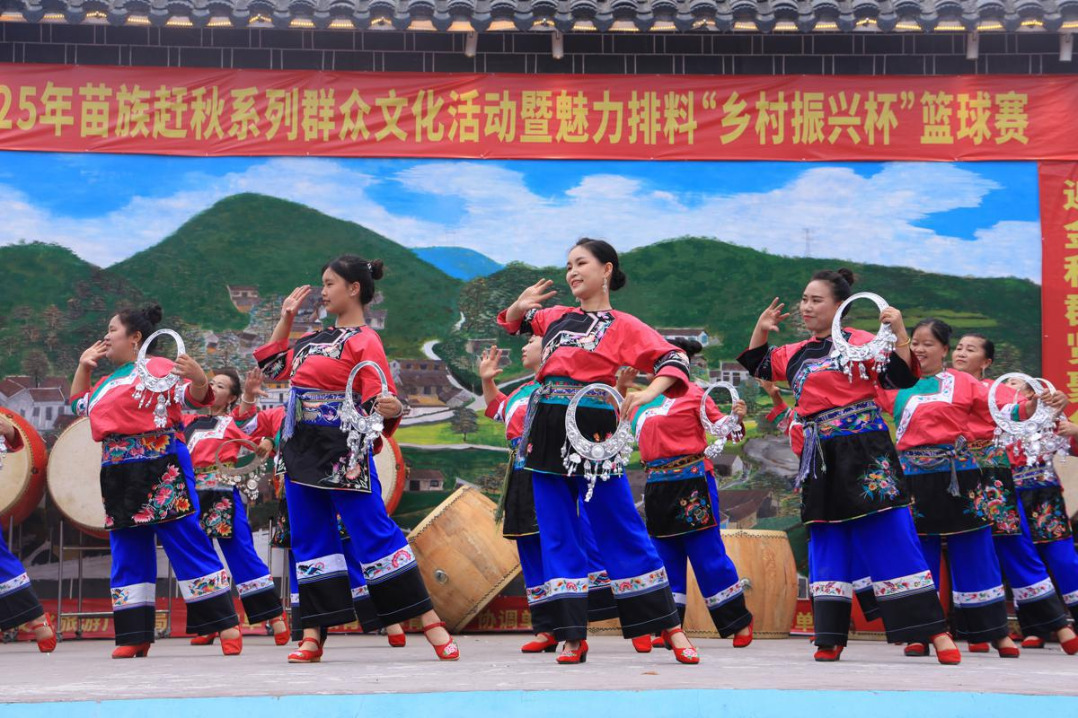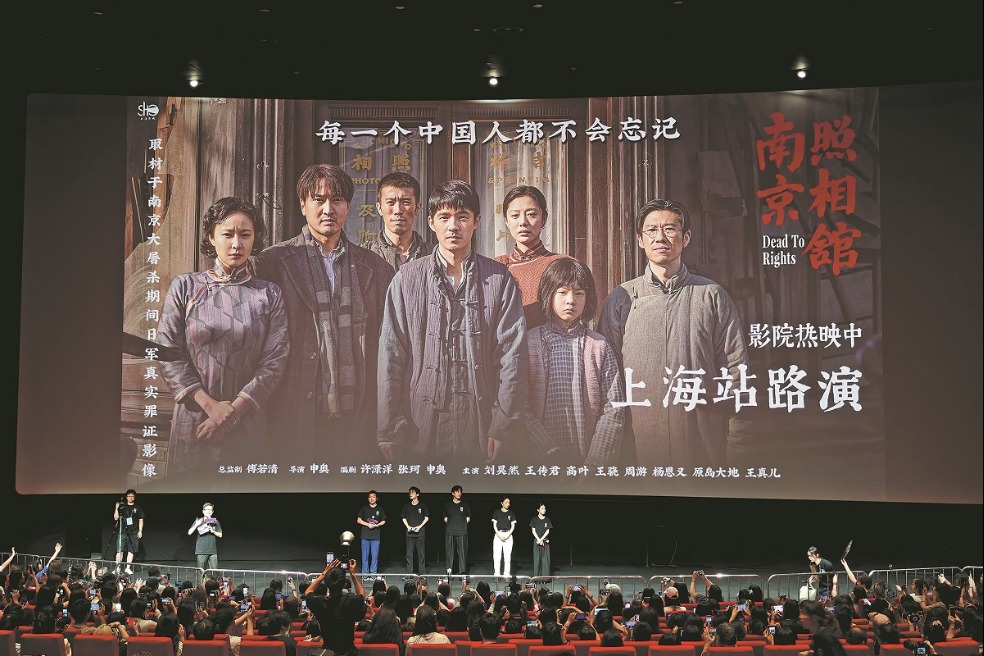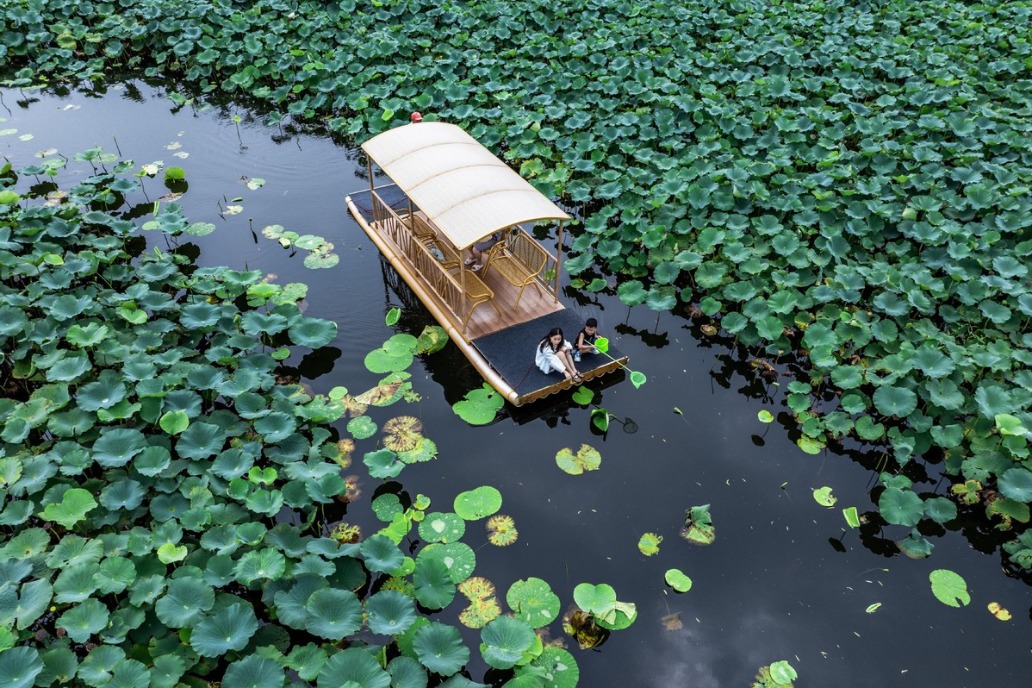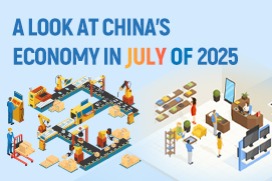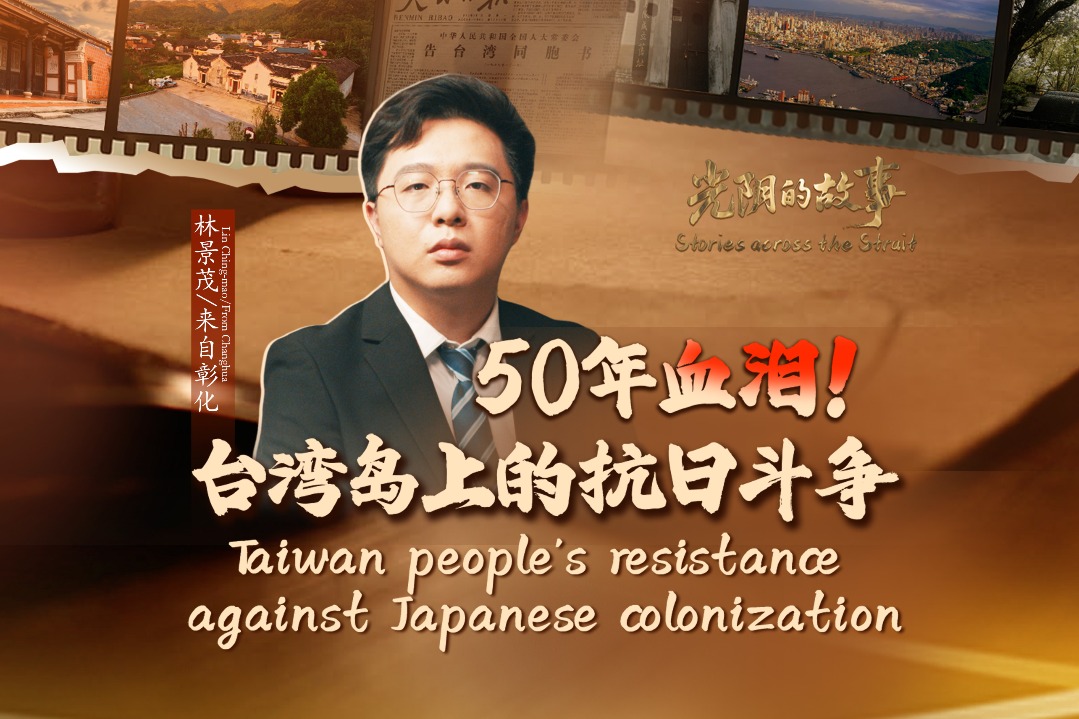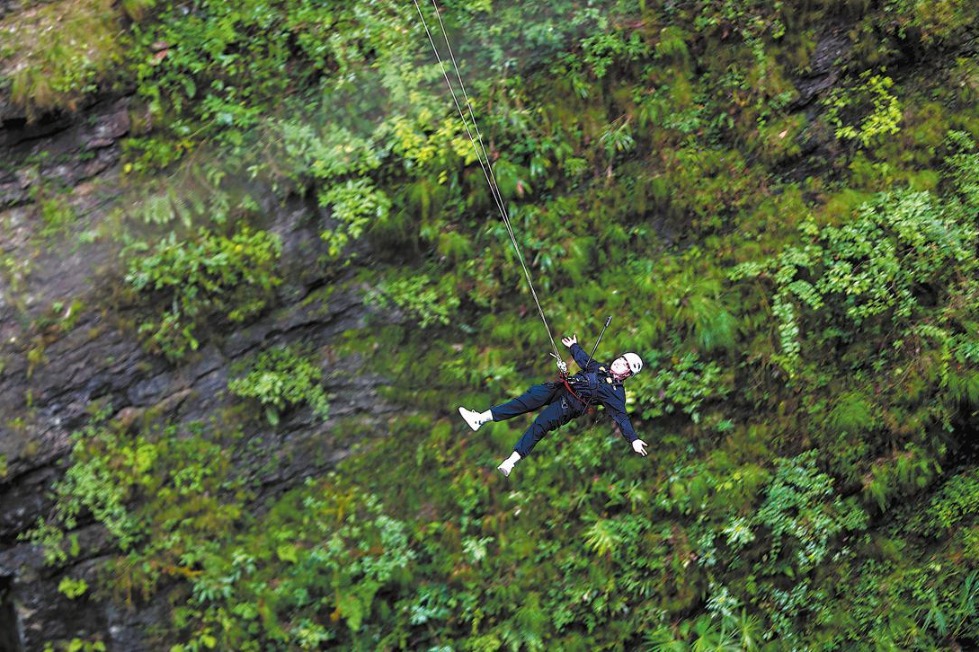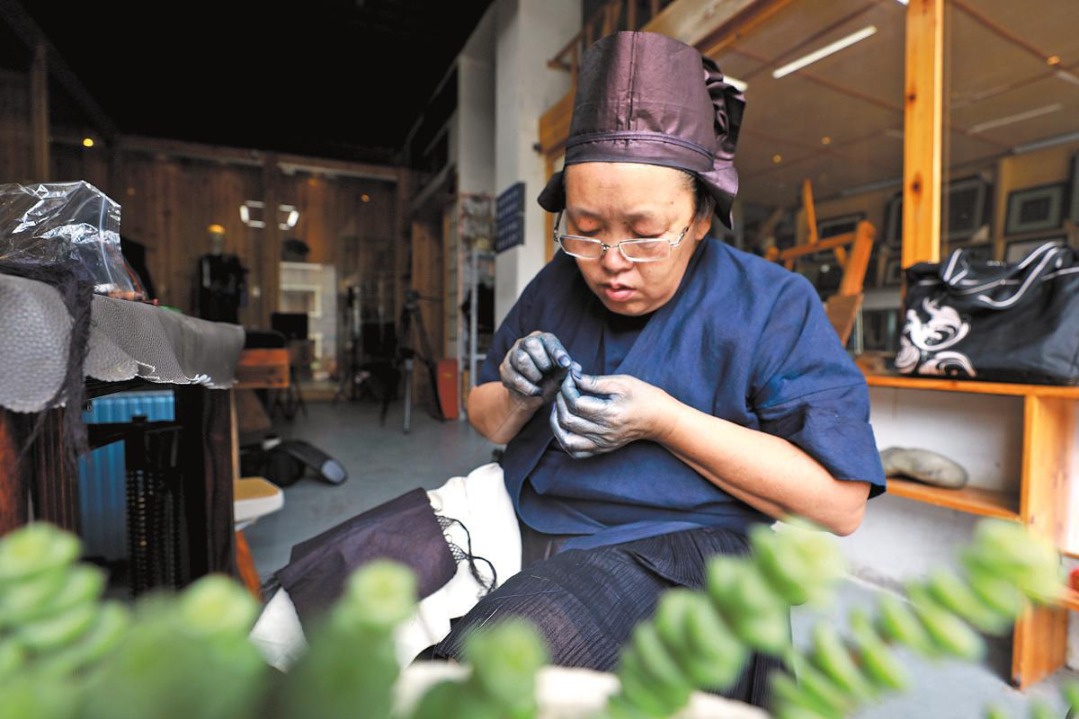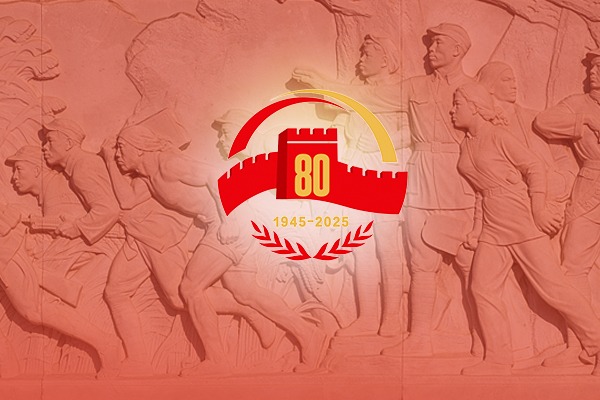Branding on the global pitch

Chinese construction and innovation skills have made their mark at the 2022 FIFA World Cup hosted by Qatar, helping to attain the premier football tournament's green goals. Zhang Tianyuan reports from Hong Kong.
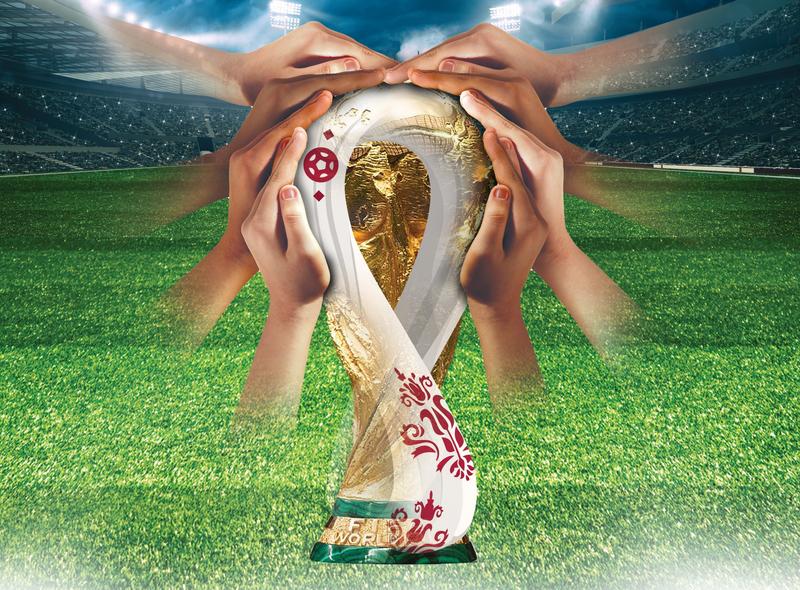
Atar - host nation of the high-profile 2022 FIFA World Cup - announced an ambitious target in January 2020 in tandem with the quadrennial football competition's global governing body that it would stage "the first carbon-neutral World Cup in history" partly by limiting carbon emissions and "investing in green projects".
"The sustainability initiatives we've implemented in our projects contribute to the Qatar National Vision 2030, and will also have a positive impact on the way future World Cups and other large-scale sporting events are organized around the world," said Abdulrahman Almuftah, who took part in formulating the sustainability strategies of this year's World Cup tournament.
Since then, the tournament has been beset with questions about how such a goal could be achieved as the petrostate is located in the Gulf desert peninsula, subject to scorching temperatures, along with a lack of manpower and problems in transporting renewable energy and environmentally-friendly building materials.
China, which has had close trade and investment ties with Middle East countries, including Qatar, for decades, has been leveraging its strengths in the infrastructure sector to help Qatar deal with the thorniest problems in attaining its green goals. For the 2022 World Cup, Chinese involvement in the construction of stadiums and Chinese-made products, such as new energy vehicles and souvenirs for the tournament, showcases not only the might of the world's manufacturing powerhouse, but also China's green and high-quality innovation and technology prowess. This speaks volumes about what's in store for the nation's mastery of creativity.
In an interview with mainland media, Chinese ambassador to Qatar Zhou Jian spoke of his country's contributions to this year's World Cup competition. "Chinese elements are extremely prominent," he said. "Lusail Stadium (the biggest stadium in Qatar and the venue for the 2022 World Cup final) has become an iconic landmark in Qatar. From infrastructure to telecommunications, from 1,500 new energy buses to solar power plants, and from match supplies to souvenirs, the 'Made-in-China' label can be found everywhere in Qatar."
Shaped like a date palm bowl and an enamel lantern, Lusail Stadium is the most eye-catching sports arena among eight lavish stadiums for the tournament that kicked off on Nov 20. The gleaming stadium is capable of accommodating some 86,000 spectators.
Lusail Stadium was built through cooperation between Qatar and China Railway Construction Corp, with sustainability on top of their mind. It was the first time a Chinese company has carried out the design and construction work for a World Cup stadium, bringing China's infrastructure supply chain and services to the world.
Wang Lei, executive manager for the Middle East region at CRCC, said the construction employed methods to create a double-skin curtain wall, between which air cavities are filled. This improves the thermal insulation abilities as hot air is cooled down after passing through the two layers of the wall before entering the stadium, thus achieving the goal of reducing energy consumption for air-conditioning.
"The technology, as well as the use of recyclable materials, makes Lusail Stadium one of the most energy-efficient stadia in the world," said Wang.
Lusail Stadium is the main venue for this year's World Cup, hosting 10 matches, including the heavyweight early-stage matches and the final, and it's inked on Qatar's new 10-riyal ($2.75) banknote.
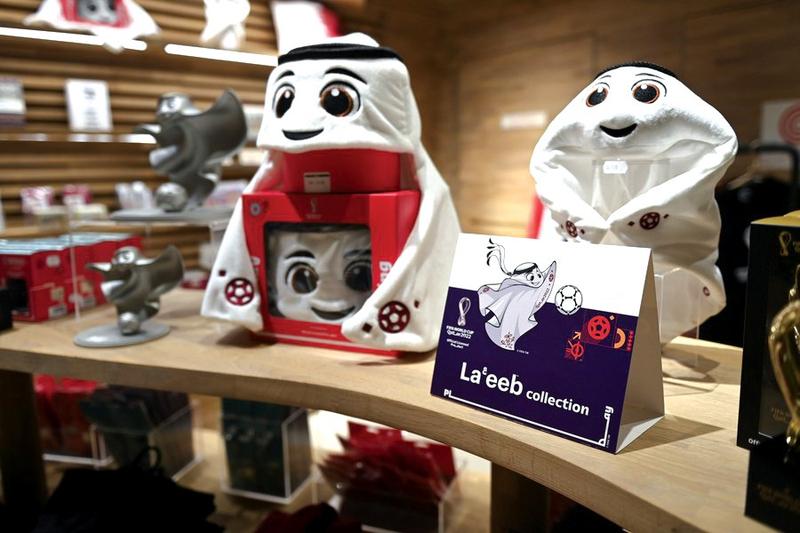
Green contributions
Other sustainability initiatives have included the use of recycled water to irrigate 8,870 square meters of football turf. The intelligent water-saving sprinkler irrigation system, designed by the environment and resources research team at Ningxia University, China, saves about 40 percent of freshwater, compared with traditional stadiums, according to the FIFA website.
Sun Zhaojun, dean of the school of resources and environment at Ningxia University, said water and fertilizers can be sent to the roots of the grass directly by adopting subsurface drip irrigation technology in the system, which reduces water losses via evaporation due to the arid climate.
A designer of the World Cup's stadiums told Time magazine that environmental protection was a core objective in the World Cup's preparations from the early design stages, and was considered in every aspect, such as where materials were sourced, how the grounds would be used after the competition is over, along with how the shapes and colors of the stadiums would influence the temperatures inside.
To align with the concept of environmental protection, Stadium 974 - one of Qatar's venues named after the nation's international dialing code and the number of multicolored steel containers for building the stadium - will be fully dismantled and its parts could be shipped to countries that need the infrastructure after the curtain comes down on the tournament on Sunday.
The containers used as building blocks for the 40,000-capacity venue were produced by logistics supply giant China International Marine Containers, and Meixin - a Chongqing-based door manufacturer, which provided the doors for the containers. Meixin's marketing manager Xiang Bo said the doors were made with high-quality and eco-friendly materials.
Buildings are responsible for nearly 40 percent of global energy-related carbon emissions, with about 10 percent coming from "embodied" carbon or the greenhouse gas emissions related to the construction, maintenance and destruction of buildings, according to the World Green Building Council.
An official report estimating carbon emissions for the 2022 Qatar World Cup published last year said the stadiums' demounting and construction constitute the second major source of green gas emissions following transportation. China's efforts in addressing environmental issues with cutting-edge technologies in the tournament prove its manufacturing sector's "turning wave" - from "Made-in-China" to "Created-in-China".
GBA's role
Zhu Wei, brand manager of Unilumin Group, couldn't agree more. The Shenzhen-listed company has been engaged in the production and design of light-emitting diode products for a slew of international sporting events, including the 2022 FIFA World Cup.
"I've seen China's manufacturing capacities growing stronger and the global image of Chinese products has improved. In the past, 'Made-in-China' meant cheap and poor-quality goods. But, now, with an increasing number of national products being exported, the label has been referred to as goods of high quality with competitive prices," Zhu said.
Unilumin Group supplied nearly 3,600 sq m of energy-efficient LED displays for the Qatar tournament, including two screens for livestreaming football matches and the scores at Lusail Stadium.
"The World Cup provides an ideal opportunity to showcase China's impressive prowess in construction, engineering, high technology, and infrastructure development," said Tony Kwok, adjunct professor at the HKU
Space Community College.
Chinese firm Yutong Bus offered 888 pure electric vehicles for Qatar's visitors traveling to the competition's venues. The green vehicles accounted for more than 25 percent of the total vehicles deployed for the World Cup.
Gan Shaoying, head of Yutong Bus Qatar's service team, said it's the first time international sports events have introduced Chinese new energy buses on such a large scale. It's also the first time pure electric buses have been put into operation as the main force to serve the World Cup tournament.
Behind the Chinese contributions to the World Cup, the Guangdong-Hong Kong-Macao Greater Bay Area's role as the nation's innovative and advanced industrial hub is distinct. The metropolitan circle hosts 5 percent of the country's total population - 86.17 million people - generating 12.6 trillion yuan ($1.8 trillion) in gross domestic product last year. It bred at least 56,100 high-tech firms operating in the Chinese mainland cities of the Greater Bay Area.
Apart from China International Marine Containers and Unilumin Group, a cluster of small and medium-sized enterprises have taken part in churning out Qatar World Cup's mascots, football jerseys and souvenirs.
Dongguan Wagon Giftware in Guangdong province has secured authorization for the global distribution and manufacturing of official commodities at FIFA World Cups for the past 28 years, including this year's trophy replicas.
The official mascot of the FIFA World Cup Qatar 2022, La'eeb - an Arabic word meaning a super-skilled player - was also made in Dongguan by toys manufacturer Techsun.
"After undergoing the test of the Qatar World Cup, I believe Guangdong's reputation as a manufacturing hub will go up in the international market, and we can enlarge our international 'friend connections'," said Gao Yongguang, general manager of Techsun.
According to Guangdong customs' statistics, the value of World Cup-related commodities exported through Guangzhou Baiyun International Airport reached 15 million yuan from October to late last month.
Contact the writer at tianyuanzhang@chinadailyhk.com
- Academician Ji Xunming named president and deputy Party secretary
- 19 punished for role in medical admission case
- US' whitewashing of Japan's aggression and war crimes criticized
- ILO China conducts training on post-earthquake recovery in Myanmar
- China's State Council appoints, removes officials
- Exhibition on CPC's crucial role in war against Japanese aggression opens
















